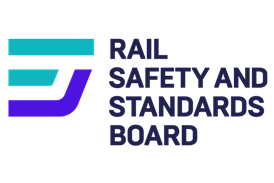FRANCE: At 09.00 on April 6, two TGV Duplex trainsets were standing at Platforms 5 and 6 in Paris Est station, well outside their normal sphere of operations. They were laden with 1500 guests, press and VIPs, bound for the inauguration of the new TGV Est rolling stock maintenance depot.
Officially named Technicentre Est Européen, the facility occupies part of the depot site at Pantin, formerly known by SNCF as Atelier de l'Ourcq (RG 3.05 p149). The depot has been rebuilt and expanded over the past two years at a cost of €240m.
Among the dignitaries on board were SNCF President Louis Gallois and Chief Executive Guillaume Pépy, together with Patrice Raullin, Director of Land Transport at the Ministry of Transport, Equipment, Tourism & the Sea, representing Transport Minister Dominique Perben.
Unfortunately, their departure was delayed by about an hour, because of demonstrators on the track outside the station, protesting against the planned liberalisation of French labour laws. After what was perhaps one of the shortest TGV journeys ever - Pantin is only 5 km from Paris - the guests reached the huge building made of concrete, glass and steel, no less than 520m long, 105m wide and 14m high.
The new depot has been completed in just 21 months by Besix, a Belgian civil engineering firm which has also recently built a 310m high hotel in Dubai. The most important part of the building is the six-track workshop dedicated for periodic maintenance and repair of the TGV Est fleet.
The guests were told that Technicentre Est Européen will look after 52 trainsets, including the 19 TGV POS multi-system units which will operate through services to Germany and Switzerland. DB ICE3s coming from Germany will also be serviced during their lay-over in Paris. The movable catenary above the workshop tracks can be energised at 25 kV 50Hz, 15 kV 162/3Hz and 1·5 kV DC as required.
The TGV POS sets will have new multi-system power cars. Passengers will ride in renovated TGV Réseau trailer cars; the interiors have been remodelled by grand couturier Christian Lacroix and MBD Design, including new seats from Compin. All 52 TGVs will operate at 320 km/h on the new line; the increase from 300 km/h is expected to add around 15% to track maintenance costs.
After the official inauguration, the guests were given the opportunity to explore the facilities. On the lifting road, a set of co-ordinated jacks can raise a complete 200m long TGV set weighing 386 tonnes in just 10min. A team of three people can replace a TGV traction motor in less than 5h.
Around 500 people will work at the complex, which is 200 more than were previously employed at the site. Technicentre Est Européen will continue to service and maintain around 140 loco-hauled Corail coaches allocated to the former Ourcq depot.
Operations preview
TGV and ICE operations on the new line will be placed under the responsibility of Rhealys, an international joint venture company owned 30% each by SNCF and DB, with Swiss Federal Railways holding 25% and CFL of Luxembourg 15%. This month is due to see the signing of a commercial agreement between SNCF and DB covering the operation and timetable arrangements from the mid-2007 timetable change. It has already been confirmed that compulsory reservation will be necessary in France on all TGV and ICE services, but in Germany the existing 'first come first served' rule will remain in force.
As a preview of the future service, TGVs will be progressively introduced on the existing line from June 25, running to the existing timetable. The first sets have already been allocated to the depot, and will soon be seen on driver training trips.
The first service to be switched over will be Paris - Metz - Luxembourg. This now has 10 trains each way per day as far as Metz, of which 5 run through to Luxembourg. The fastest journey time between Paris and Metz is currently 2h 47min, but will be cut to 1h 30min with the opening of the new line. Paris - Luxembourg will be cut from 3h 37min to 2h 15min.
The Technicentre in figures
Rolling stock allocated:
52 TGVs (19 POS, 33 Réseau) and 140 Corail coaches, plus cleaning and servicing of ICEs
Site area 28 ha
Buildings 23000 m2
Total track length 62 km
Each TGV will visit the depot 100 times a year, at an average interval of 72h.
Each set will undergo a pantograph examination every 37 days.




















